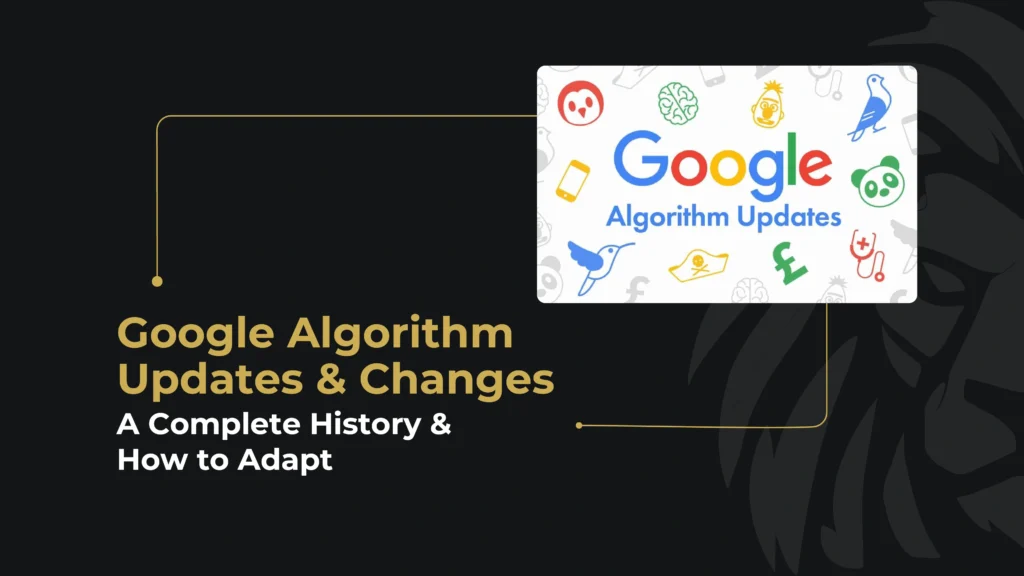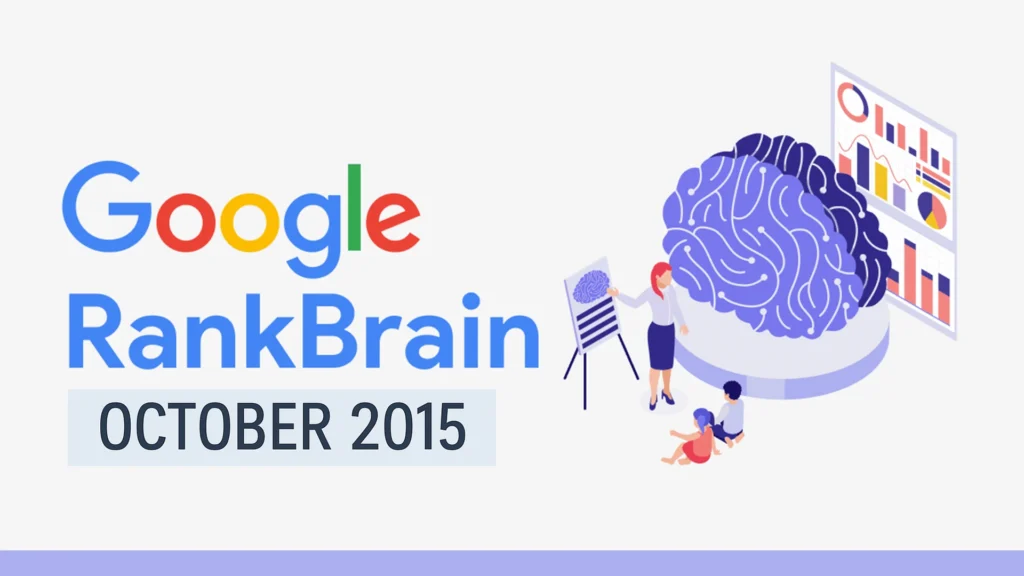Google has one job: to provide users with the most relevant and useful search results. Everything it does, from minor tweaks to sweeping algorithm overhauls, is in service of that goal.
For SEOs, content creators, and businesses, that means one thing: staying visible in search is a moving target.
One day, a site ranks comfortably on page one; the next, it’s buried under competitors that seemingly cracked some new SEO code.
What changed? A Google algorithm update.
These updates can feel unpredictable, but there’s a pattern to how Google refines search.
Understanding this evolution is the key to long-term search success.
This article provides a deep dive into Google’s algorithm changes, major updates over the years, and how to adapt without constantly playing catch-up.
Whether you’re an SEO veteran or just beginning your digital marketing journey, this resource will help you build a Google-proof strategy for sustainable search visibility.
Ready to Dominate the Search Results? Learn more about our SEO services today.
[lwptoc depth=”1″ numerationSuffix=”dot” title=”Table of Contents” toggle=”0″ backgroundColor=”#ffffff” borderColor=”#ffffff” linkColor=”#997317″]
History of Google Algorithm Updates
The Early Days (1998-2010)
When Google launched in 1998, its revolutionary PageRank algorithm differentiated it from competitors by evaluating the quantity and quality of links pointing to a page.
This approach provided more relevant results than the keyword-stuffing approach that dominated early search engines.
During its first decade, Google made several significant algorithm updates:
- Florida Update (2003): Google’s first major algorithm update targeted manipulative SEO practices like keyword stuffing and excessive link building.
- Jagger Update (2005): Focused on reducing the effectiveness of paid links and other unnatural linking schemes.
- Big Daddy Update (2006): Improved the infrastructure of Google’s indexing system.
- Vince Update (2009): Favored established, trusted brands in search results.
- Caffeine Update (2010): Overhauled Google’s indexing system to provide fresher results.
The Era of Named Updates (2011-2019)
Starting in 2011, Google began rolling out more transparent, named updates that significantly impacted search rankings:
1. Panda (February 2011)
Panda targeted low-quality content and content farms, websites that mass-produced thin, low-value content. This update affected approximately 12% of all search results and emphasised the importance of original, high-quality content.
Key Impacts:
- Penalised duplicate, plagiarised, or thin content
- Reduced rankings for sites with high ad-to-content ratios
- Rewarded original research, in-depth analysis, and comprehensive content
Panda underwent multiple refreshes over the years before being incorporated into Google’s core algorithm in 2016.
2. Penguin (April 2012)
While Panda focused on content quality, Penguin targeted manipulative link building practices. This update penalised websites that used black-hat SEO tactics such as link schemes, keyword stuffing, and cloaking.
Key Impacts:
- Devalued artificial, purchased, or low-quality backlinks
- Penalised over-optimisation of anchor text
- Encouraged natural link building through quality content
Like Panda, Penguin underwent several updates before becoming part of Google’s core algorithm in 2016.
3. Hummingbird (August 2013)
Hummingbird represented a complete overhaul of Google’s search algorithm rather than just an update to existing systems. It focused on understanding the intent behind queries rather than just matching keywords.
Key Impacts:
- Improved understanding of conversational search queries
- Enhanced semantic search capabilities
- Laid groundwork for voice search optimisation
- Emphasised the importance of context and meaning over exact keyword matches
4. RankBrain (October 2015)
RankBrain was Google’s first major application of machine learning to search results. This AI system helped Google interpret new or ambiguous queries by understanding the relationships between words and concepts.
Key Impacts:
- Better handling of never-before-seen search queries
- Improved interpretation of user intent
- Enhanced personalisation of search results
- Increased importance of comprehensive content that addresses related topics
5. BERT (October 2019)
BERT (Bidirectional Encoder Representations from Transformers) represented a significant leap in Google’s natural language processing capabilities. This update helped Google better understand the context and nuances of search queries.
Key Impacts:
- Improved understanding of context in search queries
- Better handling of prepositions and conversational language
- Increased accuracy for long-tail keywords and complex queries
- Enhanced featured snippets and passage indexing
Recent Google Algorithm Updates (2020-2024)
In recent years, Google has continued to refine its algorithms with a focus on user experience, expertise, and helpful content:
- Core Web Vitals (May 2021): Introduced metrics for page experience, including loading performance, interactivity, and visual stability.
- Page Experience Update (June 2021): Incorporated Core Web Vitals as ranking factors.
- Helpful Content Update (August 2022): Targeted content created primarily for search engines rather than users.
- SpamBrain (2022-2023): Enhanced AI-powered spam detection.
- SGE (Search Generative Experience) (2023-2024): Integration of AI-generated answers into search results.
Understanding Google Core Updates
Core updates are broad, significant changes to Google’s main search algorithm.
Unlike targeted updates like Panda or Penguin that focus on specific aspects, core updates are comprehensive adjustments that reassess how Google evaluates content across the entire web.
When Google rolls out a core update, it’s essentially saying, “We’ve improved how we assess content quality and relevance.”
These updates don’t target specific websites or industries but rather improve the overall system.
Frequency and Timing
Google typically announces core updates several times a year, with an average of 3-4 major core updates annually.
These updates generally take about two weeks to fully roll out, during which time rankings may fluctuate significantly.
Google usually announces core updates via their SearchLiaison Twitter (X) account and the Google Search Central blog.
While they don’t provide specific details about what changes were made, they often offer general guidance on creating quality content.
Case Studies of Websites Affected by Core Updates
Case Study 1: News Media Websites (June 2019 Core Update)
The June 2019 core update significantly impacted news media sites, particularly those in the cryptocurrency sector.
For instance, CCN, a cryptocurrency news site, experienced a 71% drop in mobile traffic within 12 hours, leading to a substantial decline in revenue and ultimately ceasing operations.
Other news sites, such as The Daily Mail, reported a 50% drop in search visibility, affecting their overall traffic and readership.
Case Study 2: Health and Wellness Websites (June 2019 Core Update)
Health-related websites also felt the impact of the June 2019 update.
Sites like Prevention and Mind Body Green saw their search visibility drop by 29% and 30%, respectively.
This decline was attributed to Google’s emphasis on content quality and authority, particularly for “Your Money or Your Life” (YMYL) sites that provide information affecting users’ health and well-being.
Case Study 3: Retail and Image Sites (June 2019 Core Update)
The June 2019 update also affected retail and image-based websites.
Platforms like Vimeo and Humble Bundle experienced noticeable drops in search visibility.
These changes highlighted Google’s ongoing efforts to refine search results by prioritising high-quality, authoritative content across various industries.
How to Navigate Google Algorithm Changes
Best Practices for Adapting to Updates
1. Focusing on Quality Content
Google’s ultimate goal is to provide users with the most helpful, accurate, and relevant content.
As such, focusing on creating high-quality content remains the most effective strategy for long-term SEO success.
Practical Implementation:
- Create content that thoroughly addresses user intent
- Back up claims with credible sources and data
- Update content regularly to ensure accuracy
- Demonstrate expertise, authoritativeness, and trustworthiness (E-A-T)
- Focus on solving user problems rather than keyword density
2. Enhancing User Experience
Google has increasingly emphasised user experience as a ranking factor, particularly with the introduction of Core Web Vitals.
Practical Implementation:
- Optimise page load speeds
- Ensure mobile responsiveness
- Minimise intrusive interstitials and ads
- Create clear, intuitive navigation
- Structure content with proper headings and formatting for readability
- Implement schema markup for enhanced SERP features
3. Building Authoritative Backlinks
Despite numerous Google algorithm changes, backlinks remain a fundamental ranking factor. However, the emphasis has shifted from quantity to quality.
Practical Implementation:
- Create linkable assets (research, infographics, tools)
- Focus on earning links from relevant, authoritative sites
- Avoid manipulative link building tactics
- Regularly audit your backlink profile
- Disavow toxic links when necessary
Tools and Resources for Tracking Google Algorithm Updates
1. Google Search Console
Google Search Console provides direct insights from Google about your site’s performance and any issues affecting it.
Key Features:
- Performance reports showing clicks, impressions, and positions
- Coverage reports highlighting indexing issues
- Core Web Vitals reports
- Manual action notifications
- Security issue alerts
2. SEO Monitoring Tools
Several third-party tools can help you track algorithm updates and their impact on your site:
- Semrush Sensor: Tracks SERP volatility across different industries
- Ahrefs Rank Tracker: Monitors position changes for target keywords
- Accuranker’s Grump: Measures day-to-day Google ranking fluctuations
- Sistrix Visibility Index: Tracks SEO visibility changes over time
- Moz’s Algorithm Update History: Provides a comprehensive timeline of confirmed updates
Staying Informed Through News Sources
Keeping up with industry news is crucial for anticipating and understanding Google algorithm updates:
- Google Search Central Blog: Official announcements from Google
- Google SearchLiaison Twitter (X): Timely updates and clarifications
- Search Engine Land: Comprehensive coverage of search industry news
- Search Engine Journal: In-depth analysis of algorithm updates
- Google News – Critical algorithm announcements or industry insights
- SEO Communities: Forums like Warrior Forum and Reddit’s r/SEO and r/BigSEO subreddits
Final Thoughts
Google algorithm updates reflect the search giant’s ongoing mission to provide the most relevant, useful, and secure search experience for users. While these updates can sometimes be disruptive, they ultimately reward websites that prioritise user experience and quality content.
Rather than chasing algorithm changes, focus on building a solid foundation for your website:
- Create high-quality, expert content that genuinely helps your audience
- Provide an excellent user experience across all devices
- Build your site’s authority through ethical link building and brand building
- Stay informed about industry trends and best practices
By following these principles, you’ll build a website that’s resilient to Google algorithm updates and positioned for sustainable growth in organic search visibility.
At Dominate, we don’t just help businesses adapt to Google’s evolving search landscape, we position them to lead. If you’re serious about scaling your organic traffic and future-proofing your SEO strategy, our experts are ready to craft a data-driven plan that delivers results. Let’s build your SEO strategy today.





